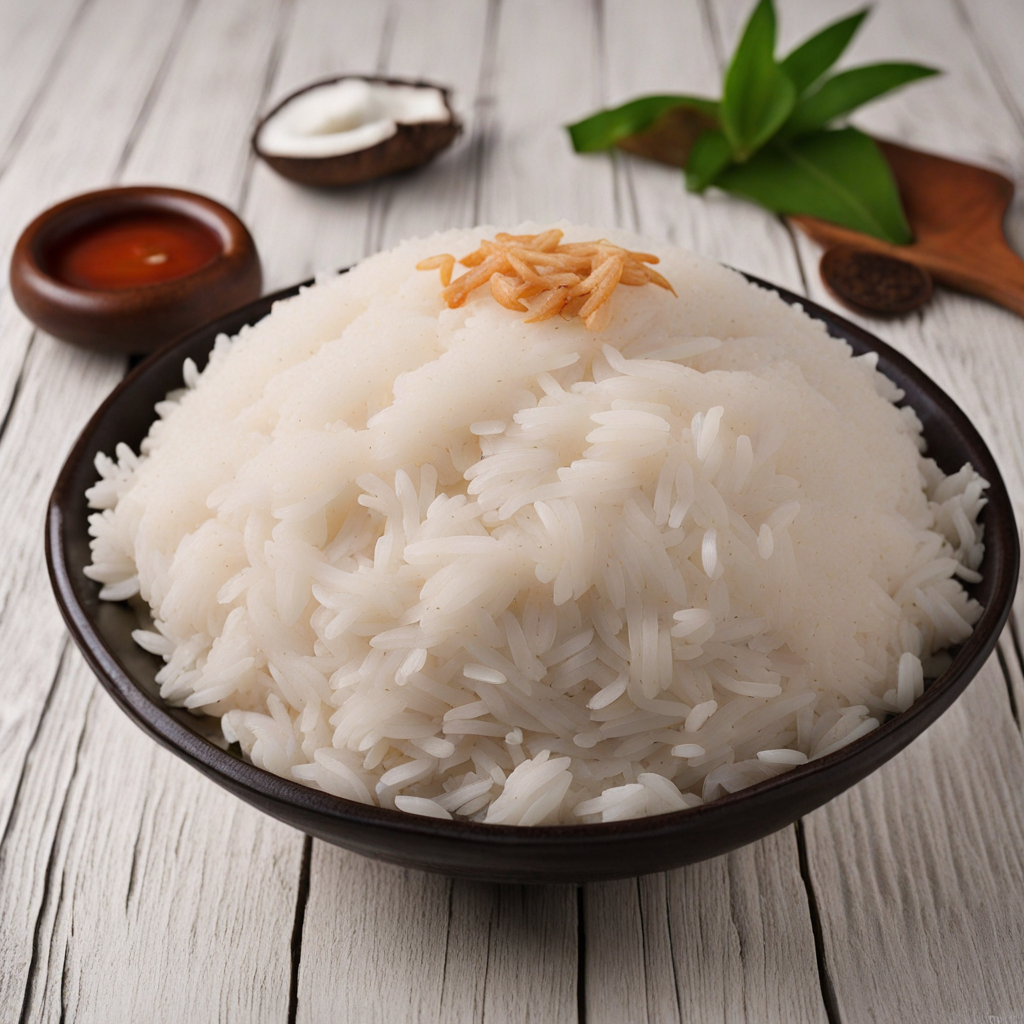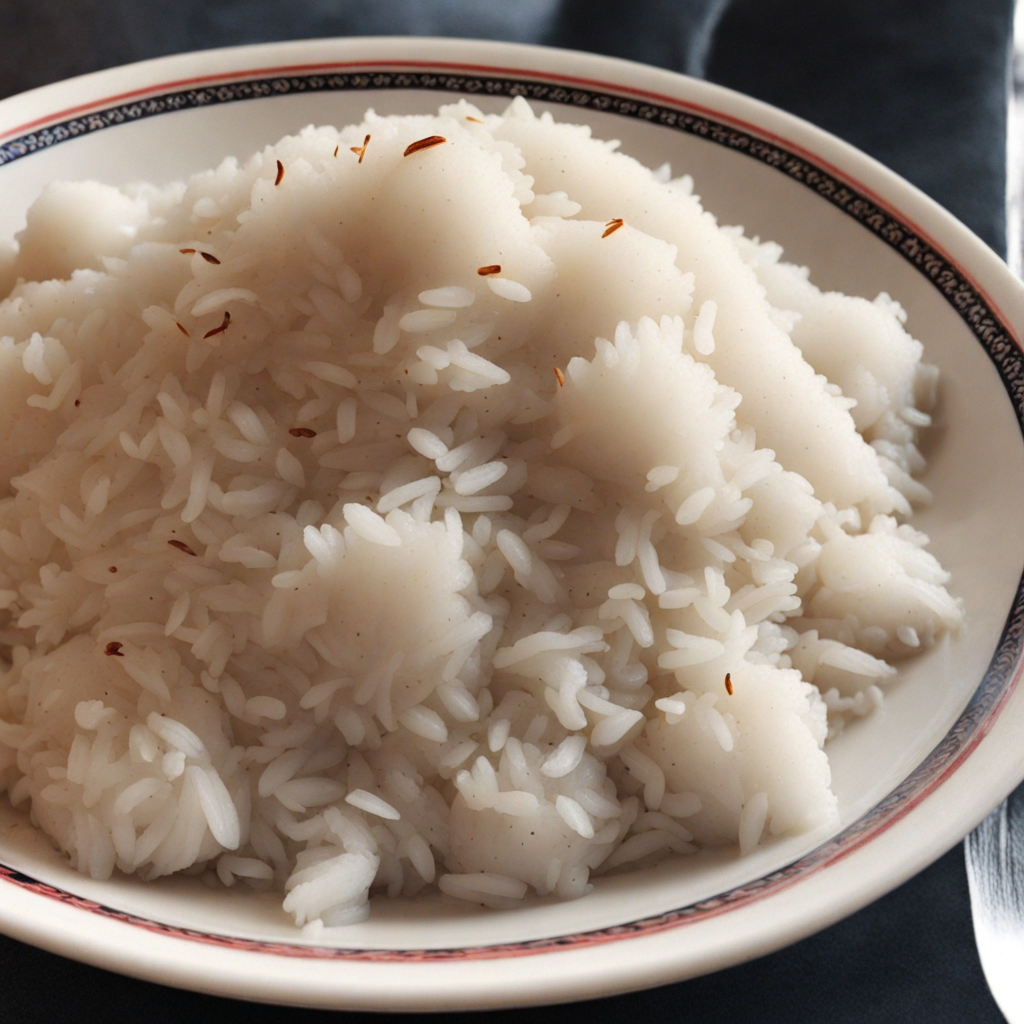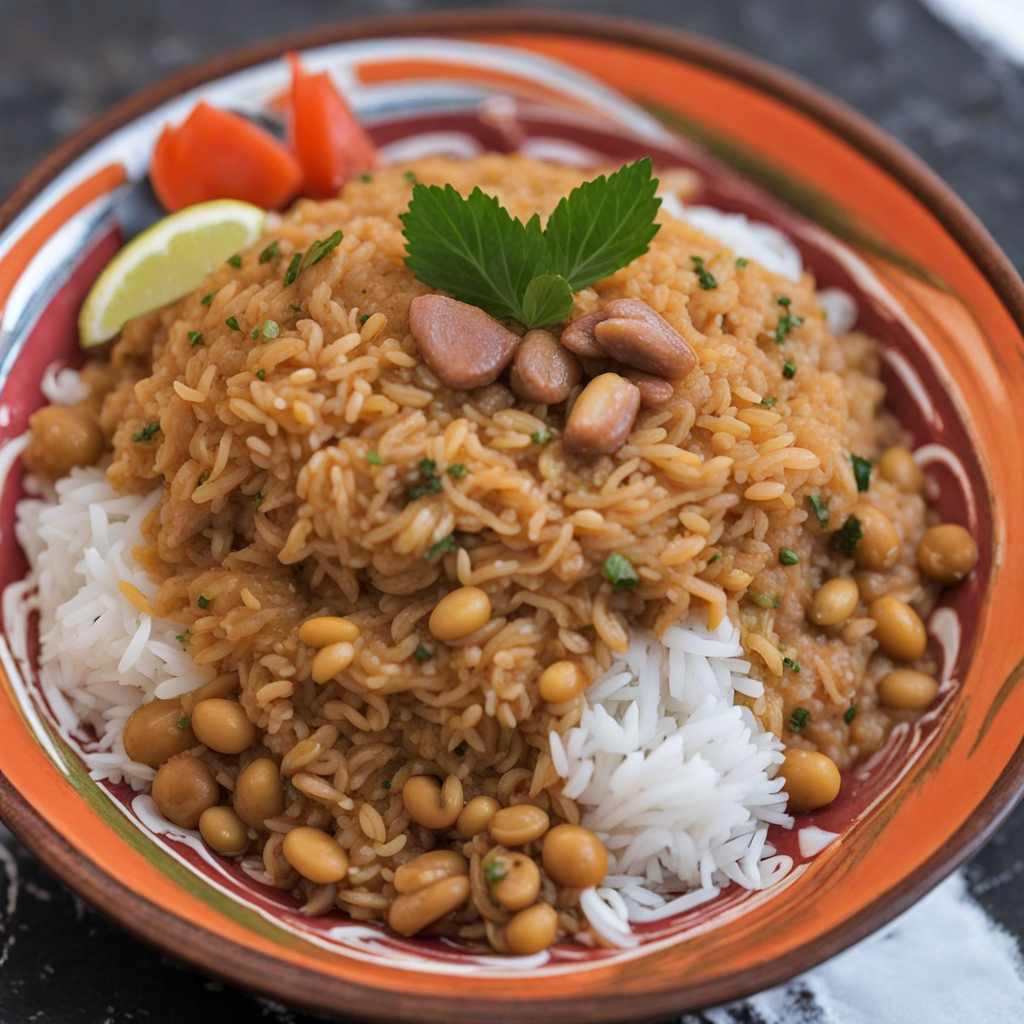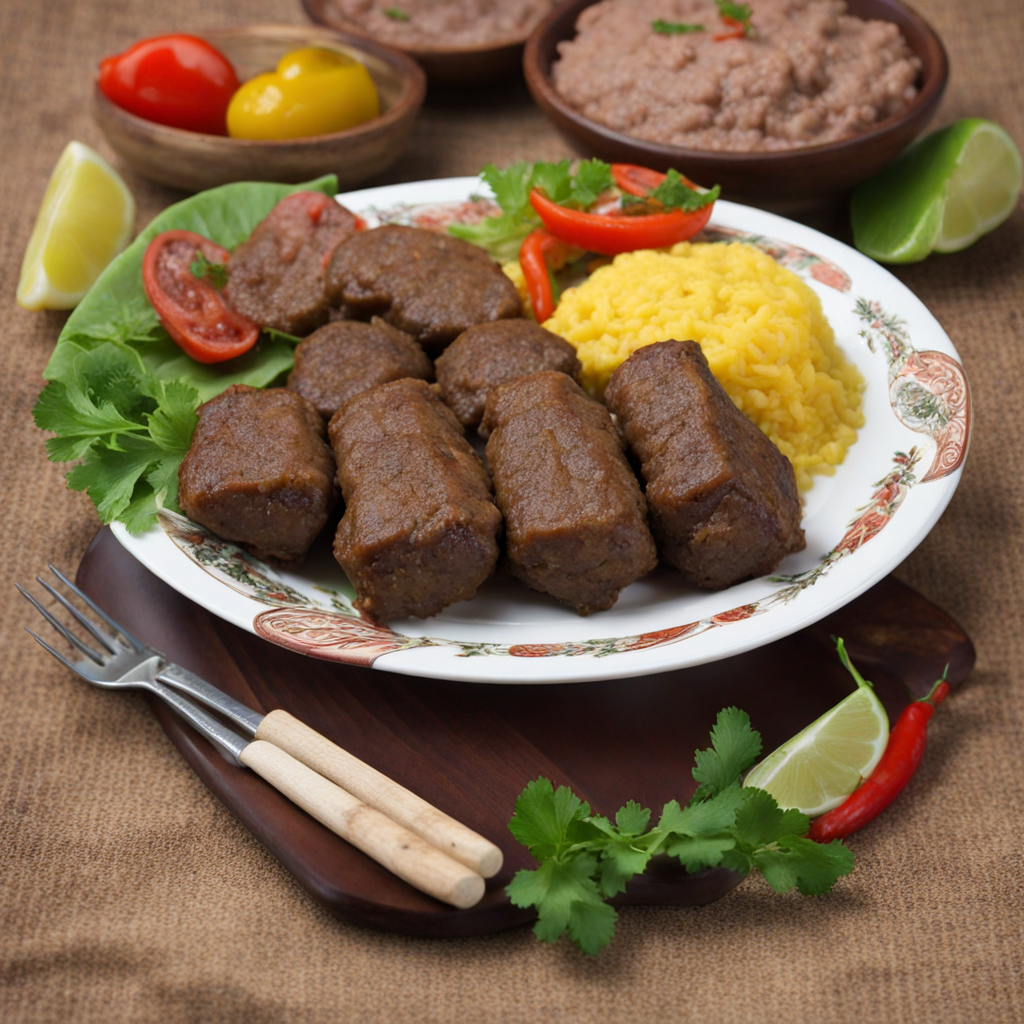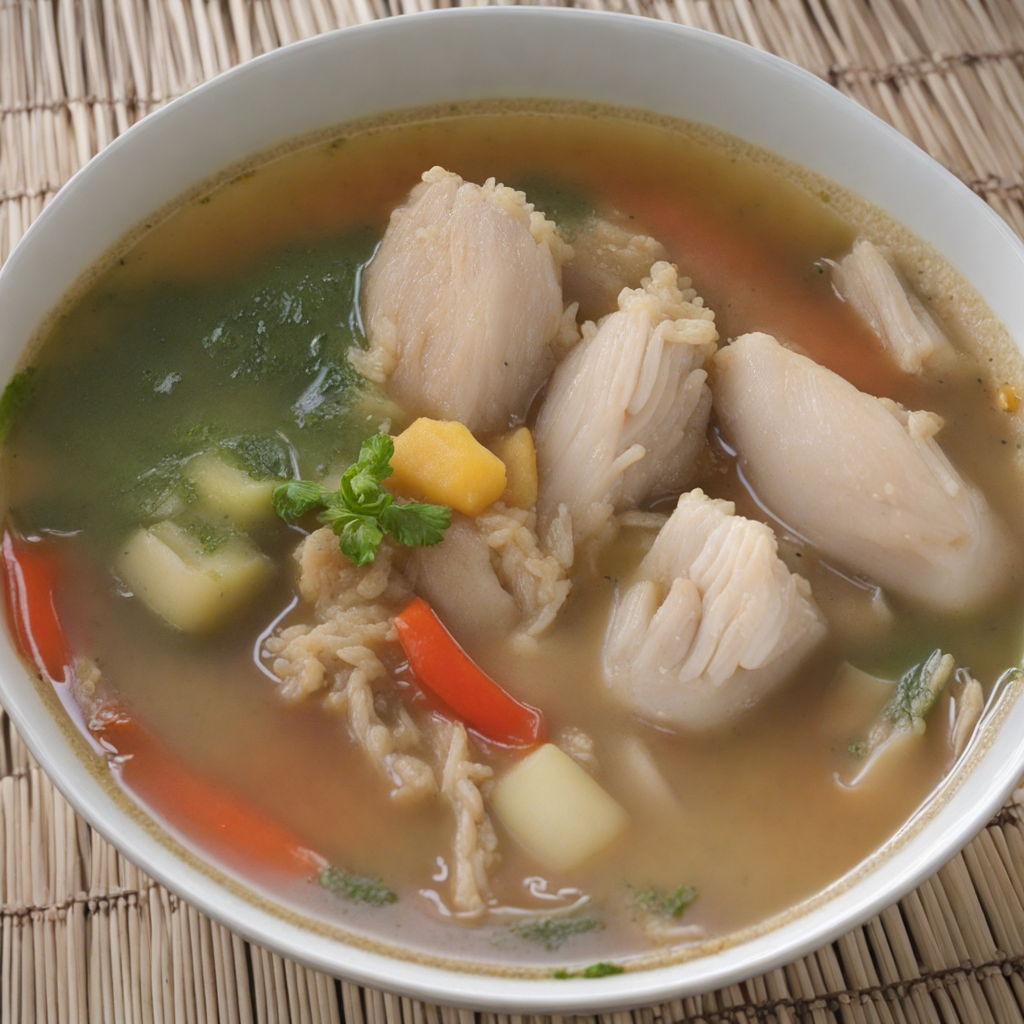Coconut Rice
Coconut Rice is a delightful dish that captures the essence of Surinamese cuisine, offering a unique blend of flavors and textures that are both comforting and exotic. At its core, this dish features fluffy white rice cooked to perfection, infused with the rich and creamy essence of coconut milk. The subtle sweetness of the coconut contrasts beautifully with the savory undertones of the rice, creating a harmonious balance that makes each bite a pleasurable experience. Often seasoned with a pinch of salt and sometimes enhanced with aromatic spices, Coconut Rice is a versatile side dish that complements many main courses, from grilled meats to spicy stews. In Suriname, Coconut Rice is not just a meal; it’s a cultural staple often served during festive occasions and family gatherings. The preparation involves simmering the rice in a mixture of water and coconut milk, allowing the grains to absorb the luscious flavors while maintaining their individual integrity. The result is a dish that is both creamy and slightly chewy, providing a satisfying contrast in texture that enhances the overall dining experience. Traditional recipes may also incorporate additional ingredients like bay leaves or pandan leaves, which contribute further layers of fragrance and depth to the dish. Enjoying Coconut Rice is an experience that transports you to the vibrant and diverse culinary landscape of Suriname. Its appeal lies in its simplicity and adaptability; it can be paired with a variety of proteins, from tender chicken to succulent fish, or enjoyed alongside a medley of sautéed vegetables for a vegetarian option. Whether served as part of a lavish feast or a comforting weeknight dinner, Coconut Rice invites you to savor its mild sweetness and creamy mouthfeel, making it a perfect introduction to the rich flavors of Surinamese cuisine.
How It Became This Dish
The History of Kokosrijst: A Surinamese Culinary Treasure Kokosrijst, or coconut rice, is a dish that embodies the rich cultural tapestry of Suriname, a small South American nation nestled between French Guiana and Brazil. This dish is more than just a staple food; it is a symbol of the diverse influences that have shaped Surinamese identity and cuisine over the centuries. The history of kokosrijst is a fascinating exploration of migration, adaptation, and the melding of culinary traditions. #### Origins and Early Influences The origins of kokosrijst can be traced back to the indigenous peoples of Suriname, whose diets were deeply influenced by the abundant natural resources of the region. The Surinamese rainforest provided a wealth of ingredients, including various tropical fruits, fish, and, notably, coconuts. Indigenous groups, such as the Arawaks and Caribs, incorporated coconut into their cooking, using it in both sweet and savory dishes. As European colonization began in the 17th century, the culinary landscape of Suriname underwent significant changes. The Dutch, who established a colony in Suriname, brought with them their own food traditions and agricultural practices. They introduced rice cultivation, which soon became a staple crop in the region. The fusion of indigenous cooking practices with Dutch agricultural techniques laid the groundwork for what would become kokosrijst. However, the most profound influence on Surinamese cuisine came with the arrival of enslaved Africans. They brought their culinary traditions, which often included rice and coconut in various forms. The blending of African, indigenous, European, and later Asian culinary practices created a rich culinary milieu that defines Surinamese cuisine today. #### Cultural Significance Kokosrijst holds a special place in Surinamese culture. It is not just a side dish; it is often served during festive occasions, family gatherings, and religious celebrations. The dish is emblematic of Suriname's multicultural identity. With a population composed of various ethnic groups, including Creole, Hindustani, Javanese, Chinese, and indigenous peoples, kokosrijst represents the harmony that can be found in diversity. In Suriname, kokosrijst is typically prepared by cooking rice in coconut milk, often with the addition of spices, herbs, and sometimes even vegetables. The result is a fragrant, creamy dish that complements a wide array of main courses, from spicy stews to grilled meats. The use of coconut milk is particularly significant; it reflects the importance of the coconut palm in Surinamese life. The coconut tree is often referred to as the "tree of life," as nearly every part of the tree is utilized in some form, whether for food, construction, or traditional medicine. #### Development Over Time As Suriname's history progressed, so did the preparation and presentation of kokosrijst. In the 19th century, the abolition of slavery in 1863 led to the importation of indentured laborers from India, Java, and China. Each group brought their culinary traditions, further enriching Surinamese cuisine. For example, the Javanese influence can be seen in the addition of various spices and flavorings to kokosrijst, making it a more complex dish. During the 20th century, as Suriname navigated its path toward independence, the food culture continued to evolve. The establishment of the Surinamese diaspora in the Netherlands and other countries brought kokosrijst and other traditional dishes to new audiences. Surinamese immigrants often introduced their culinary heritage to their new homes, sparking interest in the unique flavors of their homeland. Moreover, kokosrijst has become a symbol of national pride for Surinamese people. In the face of globalization and the rapid homogenization of food culture, traditional dishes like kokosrijst serve as a reminder of their rich heritage and identity. Cookbooks, cooking shows, and social media have played a vital role in keeping these culinary traditions alive, as younger generations seek to connect with their roots. #### Contemporary Variations In contemporary Suriname, kokosrijst is often accompanied by a variety of proteins, reflecting the diverse tastes of the population. It pairs beautifully with dishes like *pom*, a baked casserole made from grated yellow root (similar to cassava), or *bakkeljauw*, a salted cod preparation. The dish has also found its way onto the plates of food enthusiasts around the world, often being featured in international food festivals and culinary showcases. The versatility of kokosrijst allows for numerous adaptations. Some modern interpretations might include the addition of pineapple or raisins, lending a sweet contrast to the savory elements. In urban areas, chefs are experimenting with fusion cuisine, combining kokosrijst with influences from other culinary traditions, leading to exciting new dishes that still pay homage to their Surinamese roots. #### Conclusion The history of kokosrijst is a vivid reflection of Suriname’s complex and diverse heritage. From its indigenous roots to the influences of European colonizers, African enslaved peoples, and later immigrants, kokosrijst has evolved into a dish that represents the very essence of Surinamese culture. Today, it continues to be a beloved staple, bridging generations and communities through its rich flavors and comforting presence on the table. As Suriname continues to grow and adapt in an ever-changing world, kokosrijst remains a culinary treasure, cherished not only for its taste but also for the stories it tells. It is a dish that invites both locals and visitors to partake in the vibrant history of this small yet culturally rich nation, reminding us all of the importance of food as a vessel of heritage and identity.
You may like
Discover local flavors from Suriname


